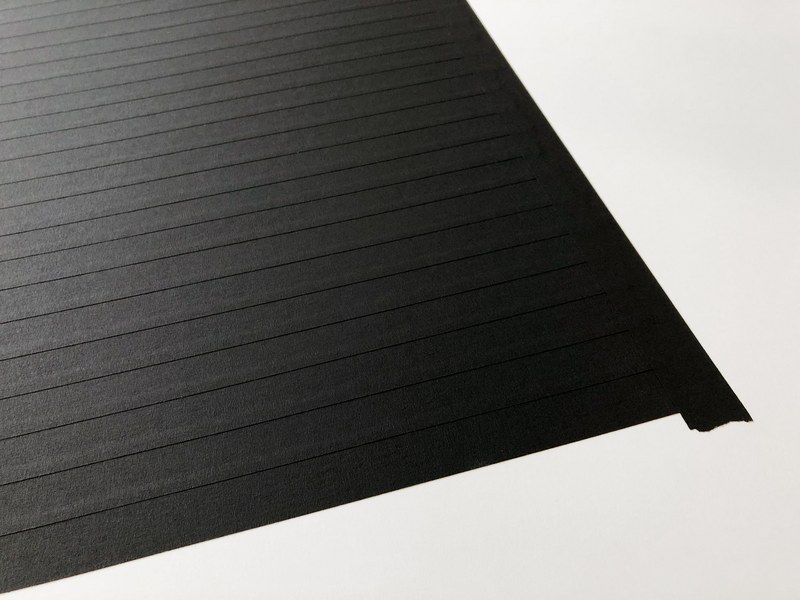Callum Innes – Tape
April 27, 2018 – June 2, 2018
Opening: April 26, 2018 | 7–9pm
For his new series, shown for the first time at Loock, Callum Innes turned his tools into his material. The adhesive tape, usually an aid for delimiting planes in the painting, is no longer just used temporarily and then removed; rather, it constructs the surface. The strips of black adhesive tape are collaged closely next to each other, or individually, to build an opaque or transparent surface. The seemingly pragmatic decision to rip the tape into individual pieces rather than cutting it exactly remains visible and takes up the impression of the artists’s specific flow. They are slightly blurred or frazzled.
In the historically varied rhetoric of the monochromatic application of color on canvas, Callum Innes (born 1962 in Edinburgh) has found a distinctive language. If painterly logic in general means that paint is applied, then Callum Innes stands for removing it. Through a special technique of addition and subtraction, of the application and removal of paint, he reveals his questions to the painting, to the space of painting, to the light of the color, and the gravity of the material. The works reveal the process of their composition. We see the traces: geometrical compositional fields are delimited, painted, erased, and once again organized into planes. They are condensed or disappear in the most subtle color nuances; they are slightly blurry or have sharp edges.
In this vibrant and moving dualism of extremes, the time of what is produced becomes factually visible and attestable. We can penetrate the process of the painting’s production, read the structure of its grammar, and follow which decisions were taken, and in what order, by the painter. In this respect, they belong to minimalism. They reveal themselves to the beholder. Their effect, however, plays with illusion and is highly psychological. When we immerse ourselves into the work and really concentrate, we discover statements about existence, poetically interpreted by the artist. In the staged perspective on translucency and opacity, color appears and disappears. Its existence, its being surfaces and disappears. Callum Innes closes a window and then opens it again.
Since the early 1990s, Callum Innes has been rigorously developing this mysterious, meditative, and spiritual quality of his work. The result are paintings on different materials: paintings on canvas, watercolors on paper, wall works on brickwork, just as they are being shown here with all their hypnotizing energy. In the current exhibition, they are being shown with new tape drawings.
The special, recognizable flow of his application of color in all his works is not just due to the individuality of the stroke, but in the slightly blurred edges of the planes. This blurring is an intentional fault in the definition of planes that are painted individually. Strips of masking tape are applied temporarily, marking the line delimiting a plane. This plane is painted and then the paint is removed again. Then the masking tape is removed. What remains is an edge that can either be sharp or slightly blurred or fuzzy.
Within Loock’s program, Callum Innes paintings are seen together with photographs, which might seduce us into looking for connections. In the combination with the photographs by Christian Borchert in the back space, we might be tempted to see Callum Innes’ painterly method itself as photographic, because it creates a kind of negative facing a positive, and exhibits the reality of what has been made.
Text by Sassa Trültzsch, Berlin, 2018
